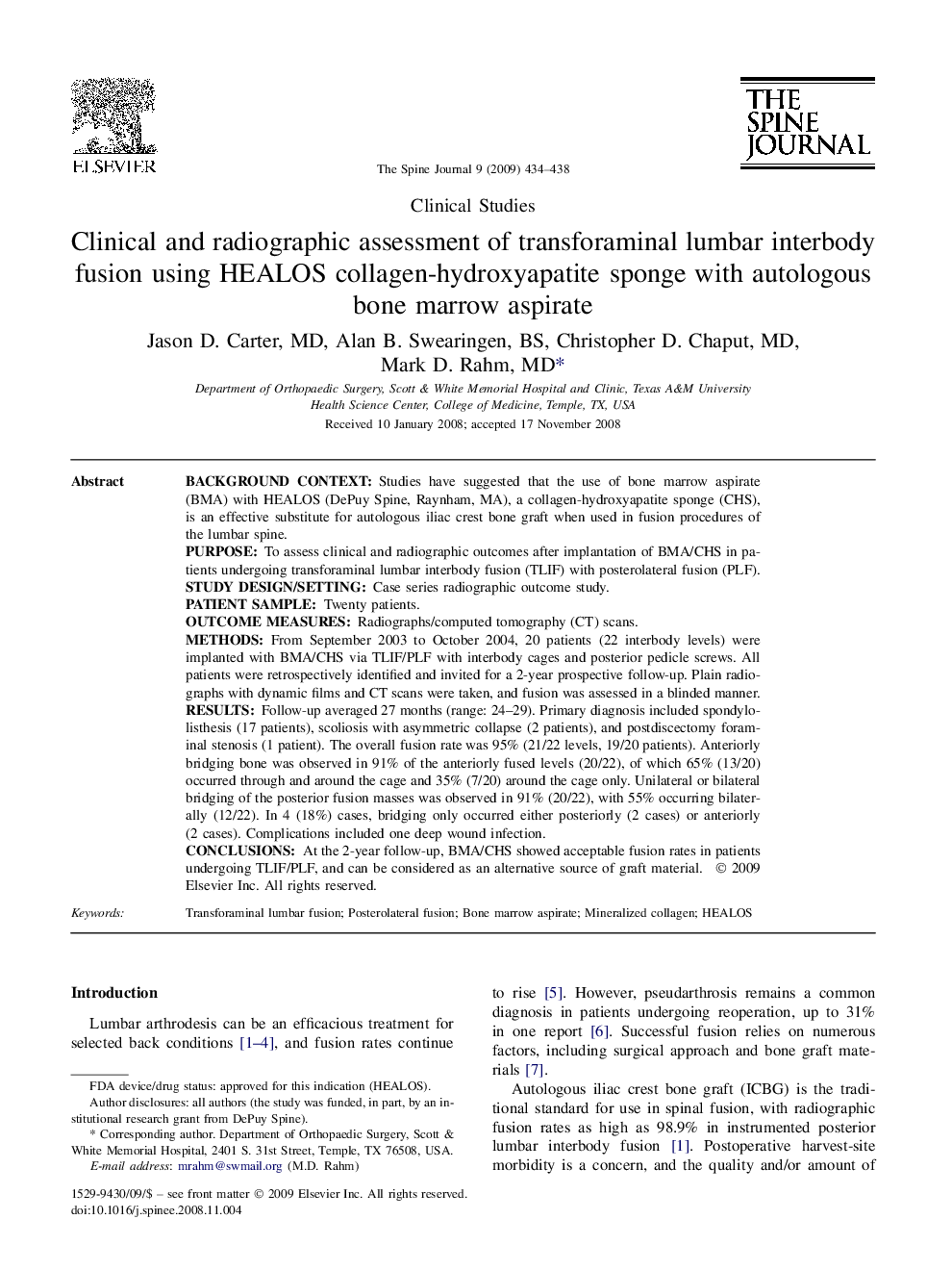| کد مقاله | کد نشریه | سال انتشار | مقاله انگلیسی | نسخه تمام متن |
|---|---|---|---|---|
| 4099647 | 1268648 | 2009 | 5 صفحه PDF | دانلود رایگان |

Background contextStudies have suggested that the use of bone marrow aspirate (BMA) with HEALOS (DePuy Spine, Raynham, MA), a collagen-hydroxyapatite sponge (CHS), is an effective substitute for autologous iliac crest bone graft when used in fusion procedures of the lumbar spine.PurposeTo assess clinical and radiographic outcomes after implantation of BMA/CHS in patients undergoing transforaminal lumbar interbody fusion (TLIF) with posterolateral fusion (PLF).Study design/settingCase series radiographic outcome study.Patient sampleTwenty patients.Outcome measuresRadiographs/computed tomography (CT) scans.MethodsFrom September 2003 to October 2004, 20 patients (22 interbody levels) were implanted with BMA/CHS via TLIF/PLF with interbody cages and posterior pedicle screws. All patients were retrospectively identified and invited for a 2-year prospective follow-up. Plain radiographs with dynamic films and CT scans were taken, and fusion was assessed in a blinded manner.ResultsFollow-up averaged 27 months (range: 24–29). Primary diagnosis included spondylolisthesis (17 patients), scoliosis with asymmetric collapse (2 patients), and postdiscectomy foraminal stenosis (1 patient). The overall fusion rate was 95% (21/22 levels, 19/20 patients). Anteriorly bridging bone was observed in 91% of the anteriorly fused levels (20/22), of which 65% (13/20) occurred through and around the cage and 35% (7/20) around the cage only. Unilateral or bilateral bridging of the posterior fusion masses was observed in 91% (20/22), with 55% occurring bilaterally (12/22). In 4 (18%) cases, bridging only occurred either posteriorly (2 cases) or anteriorly (2 cases). Complications included one deep wound infection.ConclusionsAt the 2-year follow-up, BMA/CHS showed acceptable fusion rates in patients undergoing TLIF/PLF, and can be considered as an alternative source of graft material.
Journal: The Spine Journal - Volume 9, Issue 6, June 2009, Pages 434–438